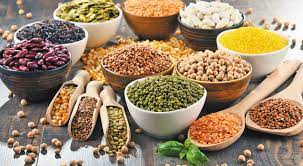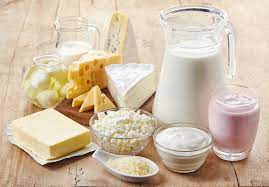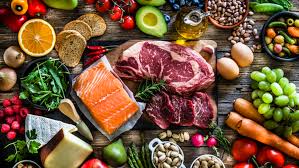How can we get the benefits of a protein-rich diet without worrying about raising our cholesterol and keeping our hearts healthy?
Protein has been touted as a dietary staple by nutritionists and personal trainers for years. Protein helps repair body tissue, builds muscle mass, and promotes good bone health.
The problems with a protein-rich diet come from two core issues: Dietary choices and not focusing on quality over quantity. Many Americans think they’re not getting enough protein in their diets and overcompensate. In actuality, most of us are consuming twice as much protein than we need to! Worse yet, we’re not making good choices and consuming the wrong types of protein.
What Is The Wrong Kind Of Protein?
With the popularity of low carbohydrate diets like the Atkins diet or Keto diet, many people have looked to cut carbs almost completely out of their menus, replacing them with higher amounts of meat. The problem is what kinds of meats we eat more of while cutting our carb intake.
Many of us think eliminating bread and pasta is a no-brainer, and since we’re cutting all those carbs out, replacing them with protein is better. Unfortunately, increasing our intake of processed meats and high-fat cuts has consequences.
Processed meats are ones that have been cured, salted, or smoked, such as bacon and sausage. Many cuts of steak like ribeye, filet, strip, and more have high-fat contents. Both processed meat and high-fat cuts have been linked in studies to an increased risk of heart disease. This is due to these types of meats having high saturated fat content.
The 2020-2025 Dietary Guidelines for Americans suggest that the average person’s diet should be around 2,000 calories a day with under 10% of those calories coming from saturated fats and a maximum of 2,300 milligrams (mg) of sodium. For example, just three slices of bacon alone contain almost 12% of our daily recommended saturated fat intake and 345 mg of sodium!
How Does Cholesterol Affect Heart Health?
Cholesterol is a waxy substance found in our blood that we need to build healthy cells. Unfortunately, high levels of cholesterol can increase the risk of heart disease.
With high cholesterol, fatty deposits can develop in our blood vessels. Over time, these deposits get bigger, making it difficult for blood to flow through our arteries. Sometimes, those deposits can break free and form a clot that causes a heart attack or stroke.

High cholesterol can be inherited, but it’s usually the result of unhealthy lifestyle choices, which makes it preventable and treatable. A healthy diet, regular exercise, and sometimes medication can help reduce high cholesterol.
Unfortunately, high cholesterol has no signs or symptoms, so the only way to know whether you have it is to get your cholesterol checked. This is done as part of a blood test recommended for people every five years, starting at age 9. If you haven’t had your cholesterol checked within the last five years, consult a physician to get it tested soon.
Heart Healthy Proteins For Your Diet
We need protein in our diet, but we can’t just load up on steaks, bacon, and sausage. So, what protein-rich foods should we eat to keep our heart healthy and our cholesterol low?
The first thing to understand is that protein-rich foods aren’t just meats. We can get protein from both animal and plant sources. While plant-based protein foods are the healthiest options, many animal-based foods can be a heart-friendly part of our diet, too!
Lean cuts of meat have lower total and saturated fat contents. Uncured meats are another great option, as they have lower saturated fat and sodium amounts in them. Even higher fat meats like ribeyes and porterhouses can be a part of a healthy diet in moderation! If you just can’t bear to cut those steaks out of your menu, keep your portions to around 3-4 ounces a week to minimize the impact on your heart health.
Let’s look at some great protein-rich foods to make a part of your diet by asking a question: What is the healthiest protein?
#1: Beans And Legumes

It turns out that the old playground song was true: Beans are indeed magical! Legumes, i.e. beans and peas, are considered the healthiest protein choice. They’re a fantastic source of protein and provide high fiber, vitamins, minerals, and antioxidants that lower cholesterol and promote heart health. In research that was published in Advances in Nutrition, participants who consumed the most legumes were found to experience a decrease in the incidence of coronary heart disease (10%), hypertension (9%), and cardiovascular disease (8%). The U.S. Dietary Guidelines for Americans recommend that adults eat about three cups of legumes per week or about half a cup of beans every day.
#2: Fish

Fish is one of the top protein picks to help promote good heart health. Eating one 3-6 ounce portion or one 3-ounce can of fish would be best each week. The two best types of fish to eat to lower your risk of heart disease are tuna and salmon.
Tuna is an excellent source of lean protein and omega-3 fatty acids, which have been shown to reduce the risk of several heart and circulatory issues. Tuna also contains vitamins B12 and D, niacin, and selenium. Like tuna, salmon contains omega-3s as well as phosphorus, potassium, selenium, and vitamins B6, B12, and D. The Harvard School of Public Health notes that while a 6-ounce broiled porterhouse has 40 grams of protein, it also contains 38 grams of fat, 14 of them saturated. The same amount of salmon provides 34 grams of protein and 18 grams of fat, only 4 of which are saturated.
#3: Nuts

According to some studies, nuts are one of the healthiest protein choices you can make for your heart. Walnuts, almonds, cashews, pecans, and peanuts are all great sources of protein. Just be mindful of how much they’re salted. Walnuts are also a great choice to help lower your cholesterol and make a great topping for oatmeal, granola, or yogurt. Natural peanut butter and other nut butters are heart-healthy choices. You can eat 2–4 tablespoons of natural, unsweetened nut butter per week for a dose of heart-healthy protein.
#4: Poultry

Poultry, like chicken or turkey, is a great low-fat protein source. One serving of poultry is associated with a lower risk of cardiovascular disease than one serving of red meat per day. Poultry also helps keep your cholesterol lower compared to red meat. You just have to make sure to choose options that are truly lower in fat.
Choose skinless chicken breasts instead of fried chicken patties, for example. Trim away any visible fat and remove the skin when you prepare poultry dishes, and use seasonings other than salt to maximize benefits without losing flavor.
#5: Low-Fat Dairy Options

The Centers for Disease Control and Prevention (CDC) suggests choosing the lower-fat versions of the following high-fat items:
- milk
- cheese
- yogurt
- sour cream
All of these are incredible sources of protein in your diet, as long as you’re eating low-fat types of them. Yogurt can help lower your cholesterol thanks to its probiotic benefits, and you can add some crushed walnuts to it to help even more!
While eggs aren’t technically a dairy product, the CDC recommends using egg whites or pasteurized egg white products instead of whole eggs with yolks for a healthier option. Egg white omelets with low-fat cheese can be a protein-rich, heart-healthy breakfast choice.
Join In 200 Million+ On The Journey To Greatness
#6: Whole Grains

While some research shows that refined carbs and added sugars can lead to higher cholesterol, whole grains are an excellent carbohydrate option for lowering cholesterol because of their fiber and nutrient content. Whole grains, like quinoa, naturally contain protein, fiber, carbohydrates, and antioxidants.
Oats are also among the healthiest whole grains you can eat; not only are they packed with vitamins, minerals, and fiber, but they’re also naturally gluten-free. Oats are rich in antioxidants, especially avenanthramide, which has been linked to a reduced risk of colon cancer and lower blood pressure. Just make sure to choose whole oats such as steel-cut oats, oat groats, and rolled oats. Options like instant oatmeal are more processed and may contain unhealthy added sugar.
#7: Pork

We can hear you saying: Wait a minute, bacon and sausage aren’t good for us! You’re right, but just because pork bacon and sausage aren’t healthy doesn’t mean that all pork should be cut from our diet.
One example of a great way to get in some pork is a pork tenderloin, a relatively lean cut. Trimming any additional fat before cooking can help limit its impact on cholesterol and give you another great alternative to red meat. According to the USDA, a 3.5-ounce serving of pork tenderloin is only 187 calories while containing 30 g of protein with no carbs or sugar.
#8: Lentils

Lentils grow in pods, making them part of the legume family along with beans, peanuts, and peas. The dried seeds of legume plants, lentils can also be referred to as pulses. They’re a staple of Indian cuisine, especially as the main ingredient in a dish known as dal. In the U.S., they’re usually associated with vegetarian cooking as a non-meat protein source.
Lentils are an easy, delicious food to add to your menu choices. They are a plant-based protein that are full of antioxidants and fiber. Lentils can be a great addition to sauces, stews, and even salads.
#9: Tofu

Tofu is an Asian cuisine staple made from soybeans. A 6-ounce serving of tofu has almost 16 g of protein and 8 g of fat as well as calcium, iron, zinc, magnesium, and potassium. Tofu also contains a lot of fiber, which helps in digestion and proper blood sugar regulation. While chicken breast is slightly lower in fat, tofu beats it in this category because it contains all monounsaturated and polyunsaturated fats, otherwise known as the good kind. Because of its subtle flavor, tofu has a lot of versatility in how you can use it in meals.
#10: Dark Chocolate

Dark chocolate gives you a way to have a treat that’s not only heart-healthy but also has a good amount of protein. A 3.5-ounce serving of 70-85% dark chocolate has almost 8 g of protein in it. Mixing it into your yogurt or as part of a trail mix with granola and nuts can be a great, protein-rich snack!
Dark chocolate contains flavonoids, compounds found in many fruits and vegetables. Their antioxidant and anti-inflammatory properties can benefit health in various ways. However, eat dark chocolate products in moderation, as they can still be high in saturated fats and sugar.
#11: Avocados

While avocados aren’t a protein-rich food, we include them here because they actually have more protein than most fruits and due to their status as a superfood. Adding avocado to your diet can lower total cholesterol and triglycerides. This is due to the healthy types of fats found in this fruit.
Avocados are a great source of fiber, healthy monounsaturated fats, and carbs that don’t come with the high sugar amounts found in bread or pasta. Avocados are also extremely rich in vitamins and minerals and can be used in a variety of ways.
How Much Protein Do You Actually Need?
How do you figure out how much of these heart-healthy proteins to eat? Generally, 10–30% of your daily calories should come from protein. The Recommended Dietary Allowance of protein needed each day is as follows:
- Women (ages 19+): 46 grams
- Men (ages 19+): 56 grams
When looking at the amount of protein in your diet, you should consider your protein needs within a healthy eating plan.
So, is too much protein harmful?
As with most things in life, you can have too much of a good thing, and protein is no different. People who eat a very high protein diet have shown a higher risk of kidney stones. A high-protein diet that contains lots of red meat and high amounts of saturated fat can lead to a higher risk of heart disease and colon cancer, but a high-protein diet rich in plant-based proteins may not carry similar risks.
There is a wealth of healthy, high-protein meals that will make sure you get all of the benefits without overdoing things here. The meals there are very heart-healthy and can help lower cholesterol while being delicious and easy to make!
Be Patient With Yourself

Making changes to your diet is no different than making any change in your life: It’s a process that takes time. By adding the protein-rich, heart-healthy foods we’ve suggested here, you can take steps to lower your body fat, your cholesterol and make your body happier. That’s what dominating your mind is all about!










